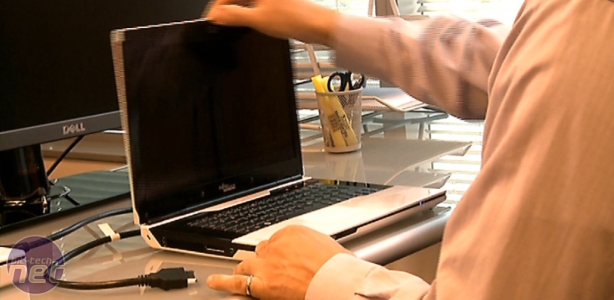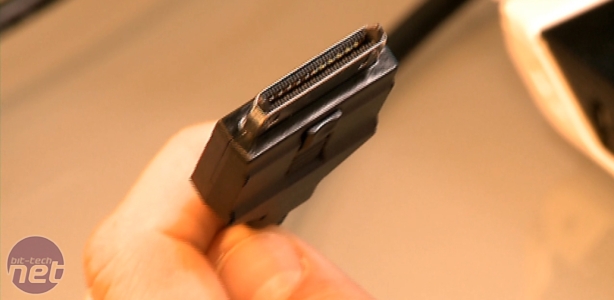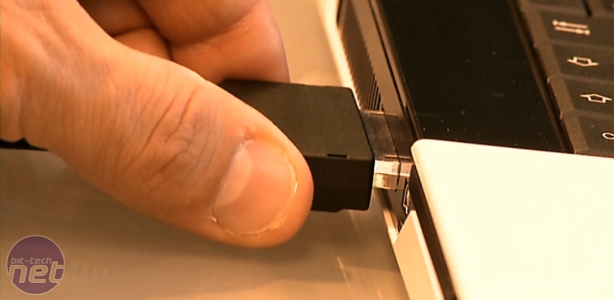AMD Vision Laptop Technology Preview
May 17, 2010 | 10:17

AMD’s external graphics XGP project not canned
While wandering the demo room of laptops, we heard a fellow journo ask about Eyefinity on laptops. The AMD representative said that there were no laptops that supported Eyefinity as yet, but there could be - Mobility Radeon HD 5-series GPUs support the technology, just like their desktop cousins do – all a laptop manufacturer has to do is connect three display outputs to the three output engines of the GPU. The AMD man then moved on talk about XGP, AMD’s external graphics card technology that it announced a couple of years ago.The premise for XGP is to have a box with a desktop graphics card in that connects to your laptop. You can then have an ultraportable (or these days AMD would prefer a Vision-based ultrathin) laptop during the day and dock it with the XGP at night for gaming glory. The box connects to a laptop via a proprietary connection based on the PCI-E 2.0 specification.




You can plug an XGP box into your laptop and enjoy the performance of a desktop graphics card without having to lug one around with you all day.
When asked if the XGP project had been canned in light of the new Mobility Radeon HD 5-series, AMD's response wasn't exactly unequivocal: "Where the XGP would come in handy is if I have something smaller that I can’t necessarily put the highest-end graphics in as a result of limited thermals, then that’s where an XGP would still be applicable." We asked if the project was still being developed to be told that, "I know Acer has been working on it, but I’m not sure when we’ll see it."
When asked whether AMD was relying on laptop manufacturers to develop XGP, the AMD representative replied that, "We provide the technology, and then they [manufacturers]will implement it. It uses a standard connection port, so one XGP device should theoretically work with any other XGP device. If one person develops it and other implements the XGP capability, you should be get that device to work. I’m not aware of any current developments, or what Acer is doing with its XGP implementation [at the moment]."
Since the XGP was announced, and despite a spectacular failure at creating a similar device by Asus (we tested it for Custom PC only to spend three days getting some lights to turn on) we’re still intrigued by the possibilities of XGP and hope to see it crawl from the research labs onto shop shelves at some point.

MSI MPG Velox 100R Chassis Review
October 14 2021 | 15:04








Want to comment? Please log in.